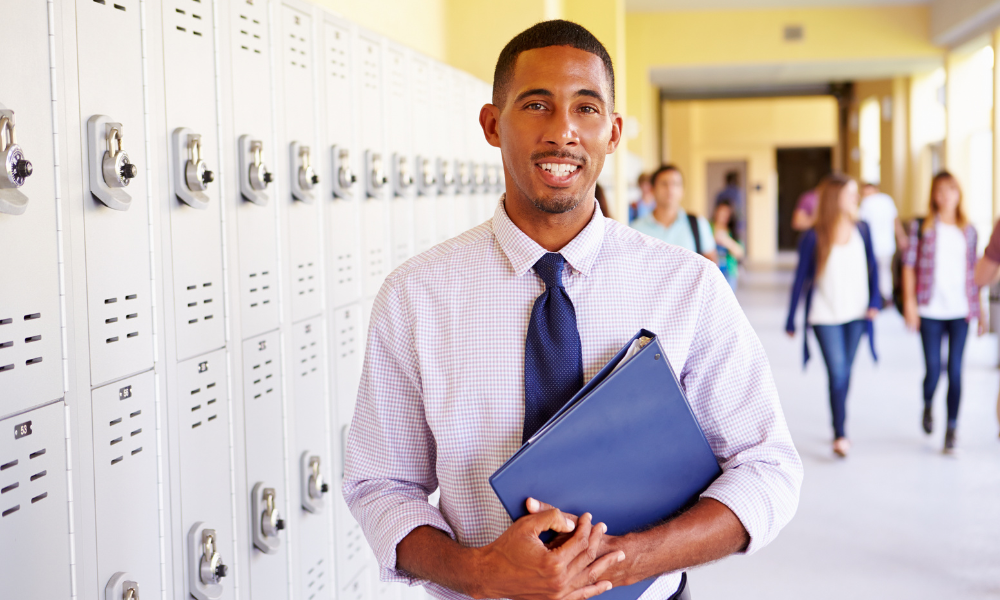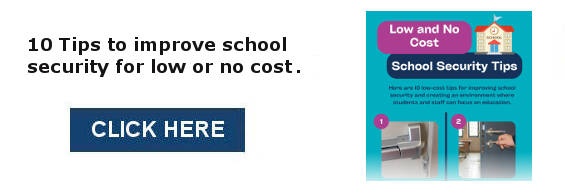Focusing on a parent’s role in school security has been a top priority for me in recent years as I have taken on the role of motherhood. Having a stepson in middle school and a toddler who will soon be school aged, I look for ways parents can be involved in making the school environment as safe as possible for our children. But what about the times when control is out of the parents’ hands? How can we be sure that educators and other school employees are taking safety and security seriously enough?
We all know that the best way to stop the next school shooting is to proactively prevent it. But we also know that training and security budgets are tight, and that it is human nature to become somewhat complacent about security when there is no visible threat. It is important for everyone to stay vigilant and to understand their place in the safety and security plan. Below, I break down ways that school resource/security officers, administrators, and teachers can proactively enhance safety and security in the schools through their everyday routines.
School Resource/School Security Officers
School resource and school security officers play a vital role in physical security, but they also serve as a role model to students and can provide a vital link for students with mental health struggles. It is important for SROs and SSOs to build trust with students and to become mentors to students who need guidance. In a “see something, say something” world, trusted resources who are readily available can drastically reduce the chance of a violent act occurring on a school campus. Following are some best practices SROs and SSOs can follow to help prevent a school security crisis from occurring.
- Arrive before school begins and take time to walk around the campus. This gives an opportunity to check for unusual activity that may have occurred overnight, or threats that have been left behind, such as drug paraphernalia, alcohol cans/bottles, weapons, or damaged property. Once a thorough inspection is complete, and all doors have been unlocked or secured as necessary, the SRO/SSO can confirm that the building is ready to accept students. The SRO/SSO can also assist with student arrival and traffic as needed. Being visible to students and their parents and being watchful for anything out of the ordinary can be a significant crime deterrent.
- Work with teachers to provide classroom presentations on safety and security. The SRO/SSO does not need to stay detached from students, nor should they. They should be pulled into school-wide and classroom-specific events and presentations throughout the year. This can complement the school's curriculum, as well as give the officer the opportunity to interact with students and discuss law- or security-related issues. The contact an officer has with students inside the classroom also helps students form positive relationship with authority and law enforcement outside the classroom.
- Assist with lunch duties. Simply walking around the cafeteria and talking with students about topics they’re interested in helps promote a positive environment and can deter any potentially disruptive behavior. We all know that the lunchroom can be the breeding ground for animosity, bullying, and cliquish behavior. Having an SRO/SSO present is another way of keeping “eyes on the ground” and providing a resource for anyone who needs it.
- Be visible in the hallways during class changes. SROs/SSOs should be highly visible and in motion as student move from class to class, engaging students even with a simple smile and “hello.” Once the bell has rung and students are in their classrooms, the officers should observe camera monitors to watch for absconding students, fighting, or other inappropriate behaviors.
- Help oversee student departure. The SRO/SSO can help administration with an orderly and safe departure from the school building. They can also be an extra set of eyes to ensure that the school traffic plan is followed by buses, parents, and student drivers.
- Assist with after-school programs and building security. There may be special events or after-school programs where the SRO/SSO can provide the same kind of service as they do during the school day. If there are no after-school programs for the SRO to participate in, they should walk around the campus to ensure that there are no threats left behind and that the building has been appropriately secured after the departure of students and staff. It is important that school safety procedures are followed during extracurricular activities every bit as much as during school hours.
Administrators
School administrators carry out a variety of tasks to keep a school running smoothly. At elementary, middle, and high school levels, school administration is typically led by a principal and may also include assistant principals, instructional coordinators, athletic directors, front office personnel, and other support staff. School administrators work full time to help provide a safe and high-quality learning environment for students. Here are some ways administrators can incorporate safety and security measures into their daily routine.
- Incorporate repetitive training measures into staff meetings. Many proactive school officials utilize every faculty and staff meeting for emergency management training. By spending the first five to ten minutes on crisis preparedness, staff will retain muscle memory in terms of how to respond in an urgent situation. This prevents having to work backwards to retrain forgotten information, as is often the case when training is only offered quarterly or yearly.
- Research education and training programs. Administrators can take the lead in finding and implementing programs to further educate teachers and support staff on student behavior and warning signs. Training programs can also educate teachers and staff on how to communicate with potential perpetrators and how to defuse violent acts.
- Set a high standard for all students and staff. Administrators should lead the way in establishing and upholding a culture of inclusivity in an environment that is safe and welcoming for all. It is important for administrators to clearly outline and fairly enforce a code of conduct for all students and staff. The administrator should lead by example and model values such as respect, kindness, and integrity.
- Involve Parents in School Safety. An important and often overlooked group when it comes to school security is the parents. Administrators should provide parents with packets containing written information regarding the school’s procedures for safety and security. It is also important for administrators to help parents understand their role in school security. Parents should be encouraged to listen to their child’s concerns and to contact the school if there are any additional resources needed. Parents play a key role in helping students feel safe and in watching out for any potential risk factors, and it is the job of administrators to keep this connection with parents strong.
Teachers
The role of a teacher is quickly becoming synonymous with a superhero, and there is no arguing that the job of teacher is becoming more difficult. Teaching is a profession that goes way beyond the classroom doors. With school violence on the rise, teachers are constantly wondering about how they can protect their students and themselves. Here are some things teachers can do.
- Make sure the classroom is properly equipped and secure. Teachers should make sure the communication systems that connect with administration and other staff members are working correctly. If teachers have access to a two-way radio, they should be sure to check the battery power each morning before school starts and to carry it with them as they move about during the day.
- Ensure that the classroom door stays locked. In an emergency situation, students and teachers will be sheltered inside their classroom. Having the ability to secure that classroom is critical. Teachers need to stay on top of who enters and exits the classroom and must ensure that the classroom door stays closed and locked while class is in session.
- Participate in training and communicate regularly. We all know that teachers have many extra responsibilities placed on them, but it is important for teachers to participate in every drill and to take all of the security precautions seriously. This sets a positive example for the students and helps ensure that the teacher will be prepared in the event of an emergency. It is also important for teachers to communicate with administration about any concerns that arise with radios, intercoms, door locks, etc. The worst thing that could happen is for a teacher to realize that their radio battery is dead, or that their classroom door won’t lock, when it’s too late.
- Identify student strengths, talents, and interests. Teachers who show genuine concern for students tend to receive their cooperation. And kids who feel valued are more likely to succeed academically and socially than those who feel that they are treated poorly. Teachers have the opportunity to help develop positive traits and potential in students. Teachers are so much more than classroom instructors. They can help shape a student’s destiny.
Maintaining a safe and effective learning environment for our children is certainly a collaborative effort. Our school staff take on numerous challenges throughout their careers and navigating through fears of school security continues to be at the forefront of these challenges. It is my hope for my son, and for all future generations of students, that school officers, administrators, and teachers will continue to do whatever it takes to make our schools the safest place in the community.
_______________________________________________________





-1.jpg)
.jpg)
.jpg)
.jpg)
-2.jpg)
.jpg)


.jpg)
.jpg)
.jpg)
.jpg)
.jpg)

